Bag width is zipper width + 3"
Bag height is about 2/3 of width
Seam allowance in the image is 1/2" but I'm actually sewing them at 5/8"

Cut out two pieces of cloth from the template

Put the cloth together good-side to good-side
Sew a baste line along one long-edge
(Straight stitch, long and loose, do not anchor either end)
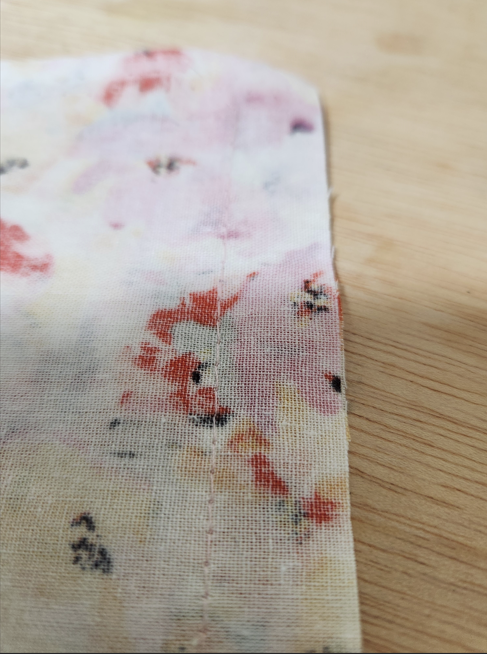
Iron the seam flat so the the cloth is spread to the left and right
The good-side of the seam is exposed upward
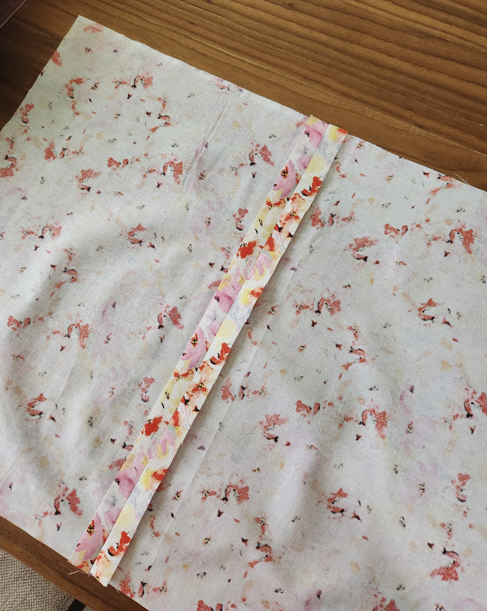
Place the zipper opening-side-down over the seam
So that the zipper opening aligns with the basted seam
Pin the zipper in place
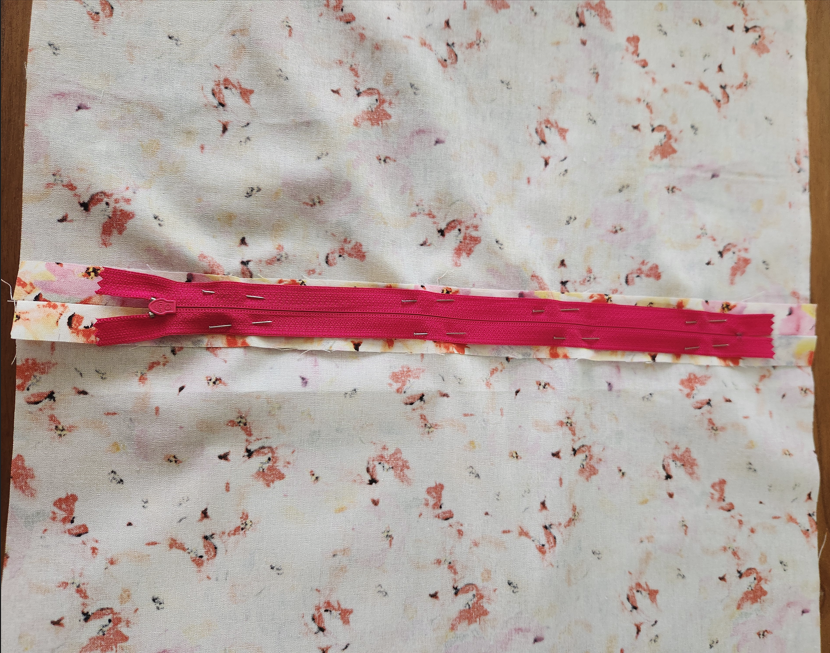
Note that the zipper pull-tab is tucked in, pointing in the direction of the pull

Sew a button-hole stitch from the edge of the seam to the start of the zipper mechanism
(zigzag stitch, 0.75 length, 3 width, 3 tightness)
Sew such that both sides of the seam are secured together

For the pull-tab end of the zipper, sew inward to where the pull-tab will be but don't sew over the zipper parts yet

Put zipper foot on sewing machine
Check how to adjust the needle to the left or right such that you can continue using the zigzag stitch and the needle does not collide with the foot
Sew from before the start of the zipper, in a straight line, all the way along the outer edge of the zipper, till past the end of the zipper
(zigzag stitch, 0.75 length, 3 width, 3 tightness)
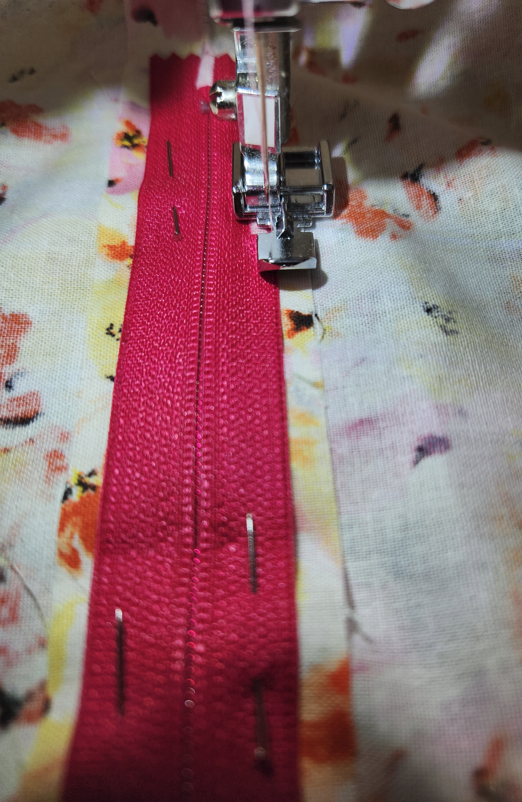
Do this on both sides of the zipper

The seams look like this from the good-side

Use a seam-ripper to remove the baste seam
This will reveal the usable side of the zipper
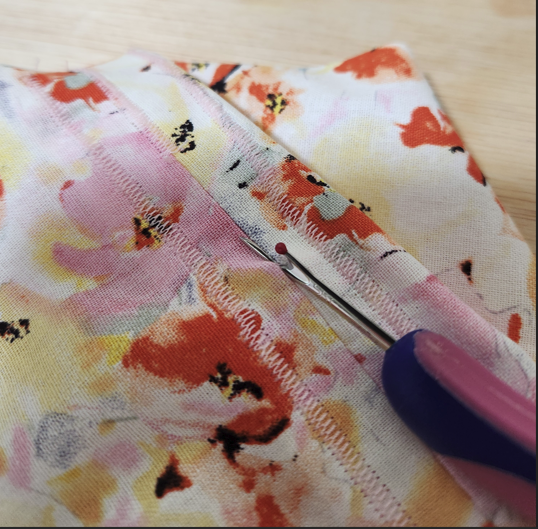
If there is a gap at the pull-tab end of the zipper

Then open the zipper several inches to get the pull-tab out of the way
Flip the cloth over to good-side-down
And button-hole-stitch the middle seam to come in right to where the zipper actually starts
Include the zipper's lose ends in this seam, pulling them to lie together right up to where the teeth start
(did not save a pic of this)
Flip the cloth to good-sides-together
Align the short-edges together on the side with the zipper pull-tab
Cut a short length of ribbon, pinch its ends together, and pin them in between the sides of cloth
This will create a loop of ribbon, anchored in the side of the bag, that will stick out so that a label can be attached to it
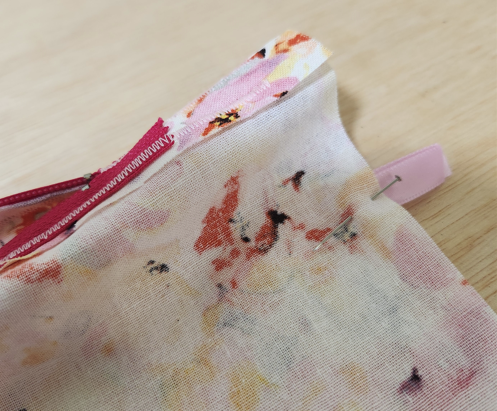
(view from the opposite side)
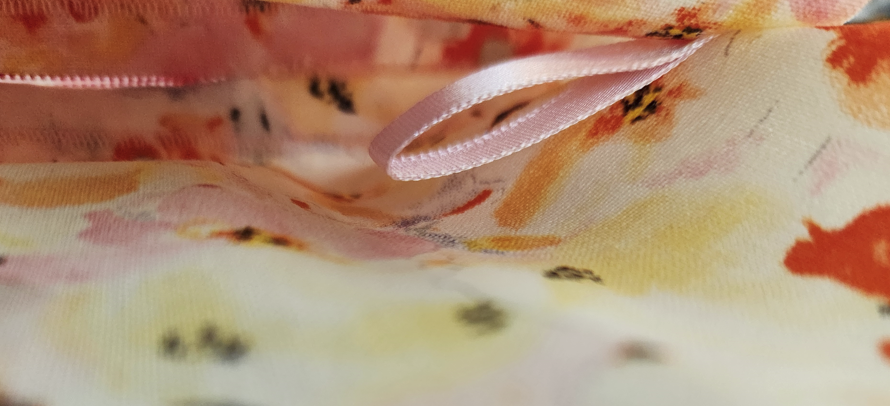
Pin the entire short-edge together
And pin along the other short-edge also
Sew a baste line along each short-edge
(Straight stitch, long and loose, do not anchor either end)
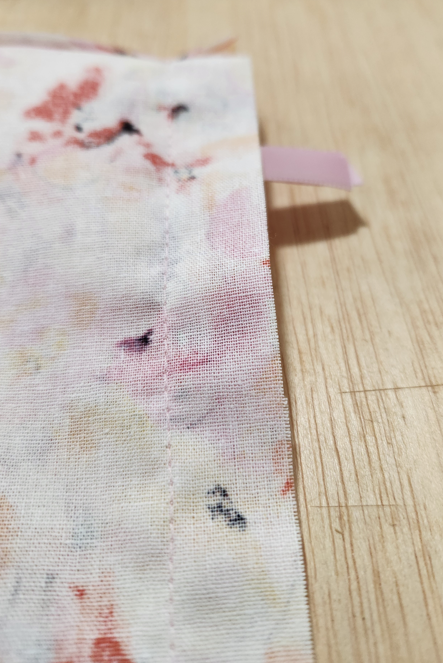
For each basted seam,
Trim away the top layer of fabric to 1/4" from the baste seam
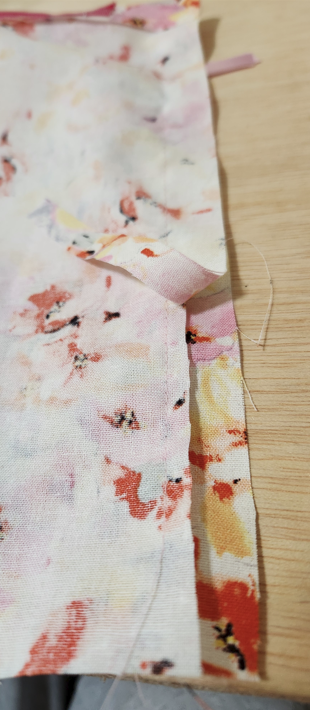
For each basted seam,
Fold the lower layer of cloth over so that it's edge is along the baste line
Iron it in place
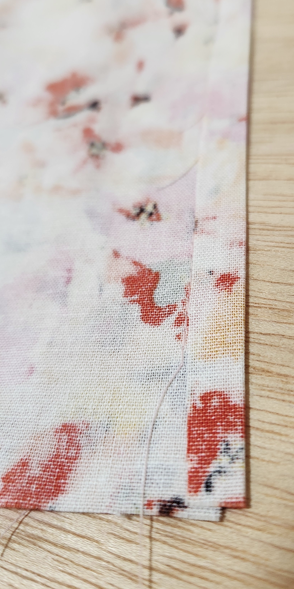
For each basted seam,
Fold the edge inward one more time, along the baste line
Iron it in place

For each basted seam,
Sew a loose zigzag along the whole edge, close to the inner edge of the folded cloth
(zigzag stitch, 3 length, 3 width, 3 tightness)

Leave the zipper half-open so that the bag will be easy to turn inside-out
Sew a baste line along the open long-edge of the bag
Cut the corner off of each end of the remaining open long-edge of the bag
Such that when the last edge is folded up and sewn, the corners will be secure (no holes or gaps left)
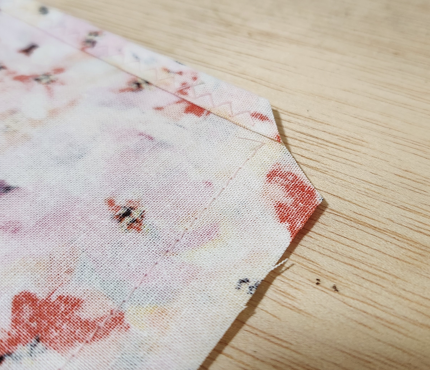
Repeat the steps for trimming, folding, ironing, and sewing the last long-edge of the bag
Same as was used on the two short-edges of the bag
Turn the whole bag right-side-out
The bag is complete
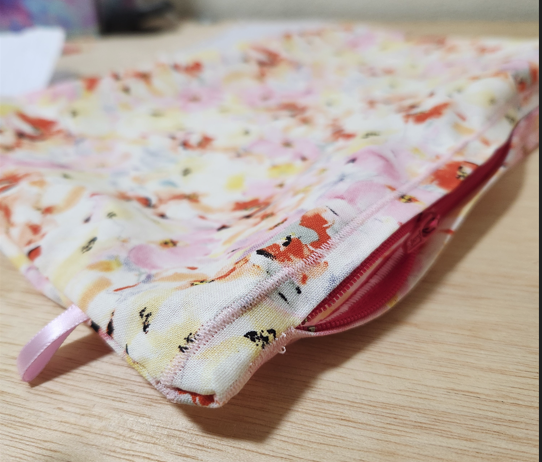

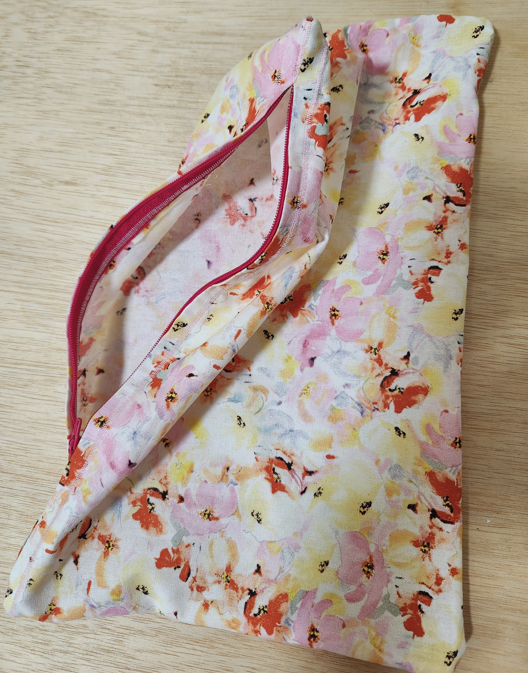
This example was done with a thin cotton cloth
If the cloth is thick (like duck canvas)
Then when folding the non-zipper edges
- Do trim the upper layer of cloth
- Do fold the lower layer over to touch the baste line
- Don't fold again, it will get too thick to sew easily
- Sew the zigzag along this edge and just manually remove any loose threads

Material: a thin and rip-resistant plastic - selected so there'd be no friction sliding into bicycle saddlebags
Material: also a 1" wide braided nylon strap
Size: designed to fit my bicycle saddlebags width and depth
Bag dimensions are 10" high, 12" wide, 6" deep
The handle loops go up an additional 7"
The handle loops wrap under the bag and up the other side, so when holding the handles the weight of the contents is on those straps
Seam allowances: 5/8"
Cut out:
- "FRONT" one piece of cloth 13 1/4" x 27 1/4" (i.e. 12"x26" plus seam allowances) - this is the front, wraps to be the bottom, wraps to be the back also
- "SIDE" two pieces of cloth 11 1/4" x 7 1/4" (i.e. 10"x6" plus seam allowances)
- "STRAP" one nylon strap 1" wide x 82" long

Arrange the short end of a SIDE at the middle of the long end of FRONT
Pin it in place
Arrange the short end of the other SIDE on the opposite long end of FRONT
Pin it in place

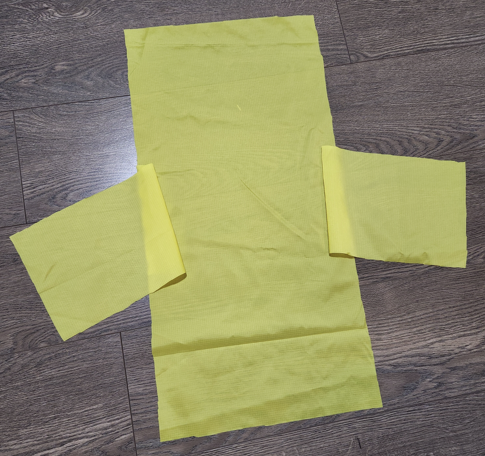
Stitch: straight, length 2
Sew along the pinned edges at seam allowance
Don't go to the edge of the SIDE cloth, leave a seam allowance

Bring the corner of FRONT to meet corner of SIDE
Pin along the edge
Do this for all four pairs of corners, so that the shape of the bag is formed

Trim a triangle out of the FRONT cloth where it is being pulled too much
Don't cut so far in that you cross the seam allowance

Sew along the pinned edges at seam allowance
Don't go to the edge of the SIDE cloth, leave a seam allowance at the top of the bag
Try to meet the existing bottom seam

Start with the bottom-of-bag seams
Turn seams in towards the SIDE cloth
Turn in once, approaching the existing seam, then turn again so cloth edges are tucked away
Pin in place

Stitch: zigzag, length 2, width 2
Sew along the pinned edge, staying near the inner edge of the turned cloth
When sewing the bottom-of-bag seam, do not go to the side edges, still leave the seam allowance there

Repeat this along the longer edges

Repeat along the top-of-bag edge
When sewing over the thicker sections (where layers of cloth are folded over), manually turn the sewing machine handle so you can get through the thicker material without breaking the needle
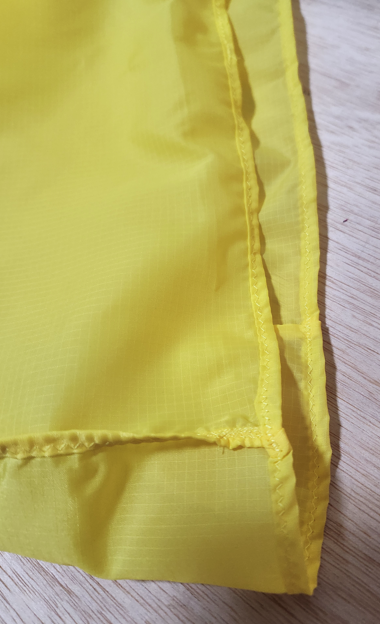
Turn the bag right-side-out
The STRAP is going to form one continuous loop
Turn the STRAP so that it is not twisted on itself
Place the STRAP so that there is a 2" overlap
Pin that in place

The STRAP will attach to just the FRONT cloth
The inner edges of the STRAP are centered and 3" apart
A 14" length of the STRAP extends above the FRONT cloth as a handle

For the final placement, I kept the overlap portion of the STRAP in the "handle" part, but not at the top of handle where my hand will be
Pin the STRAP in place
It loops under the bottom of the bag and comes up the other side to form another handle
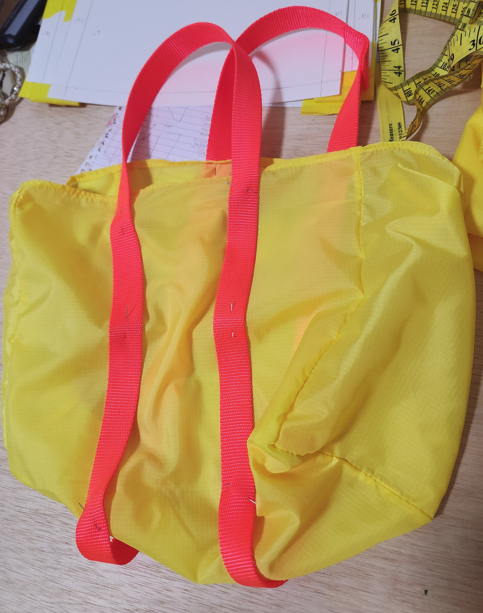
Stitch: straight, length 2
Sew the STRAP to itself at the overlap point
I did some back-and-forth reinforcement across the whole overlap for strength
Sew the STRAP to the FRONT cloth
I did some back-and-forth reinforcement across each top-of-bag section for strength
I did one line of stitch along the rest of the STRAP

The shopping bag is complete